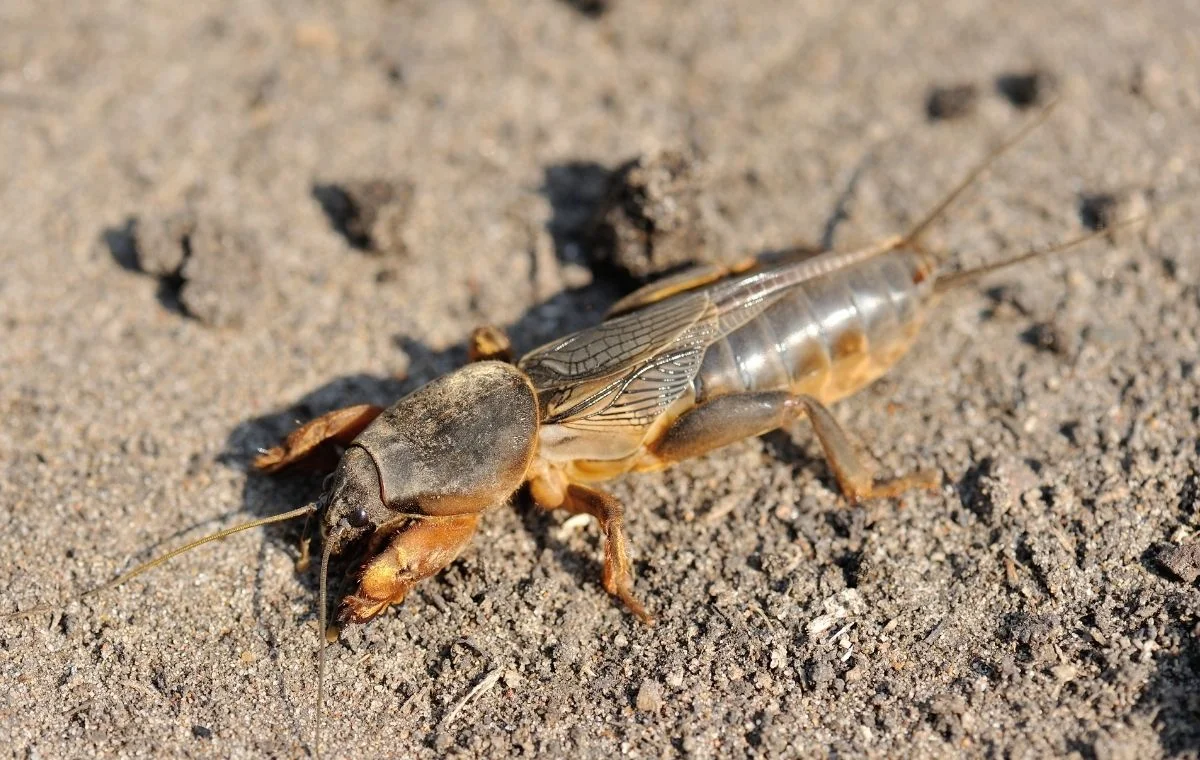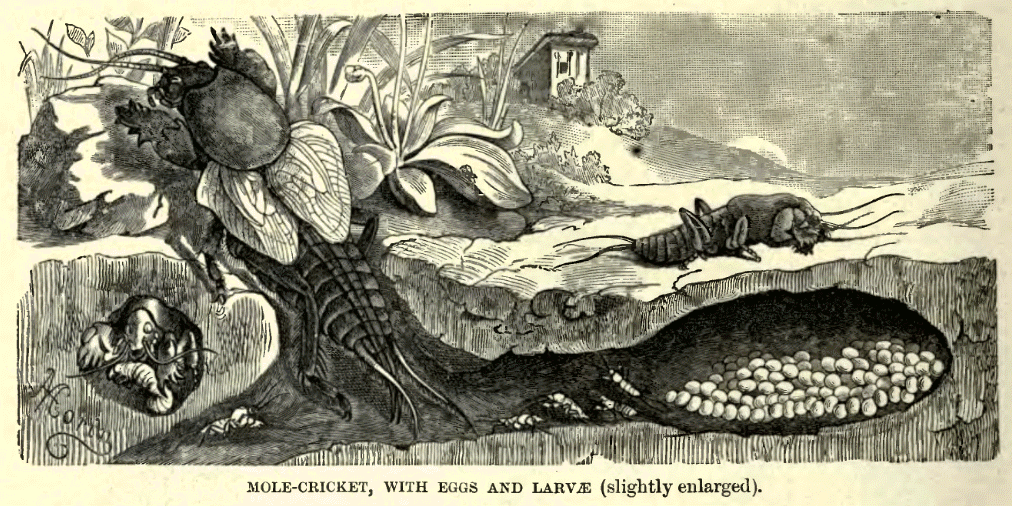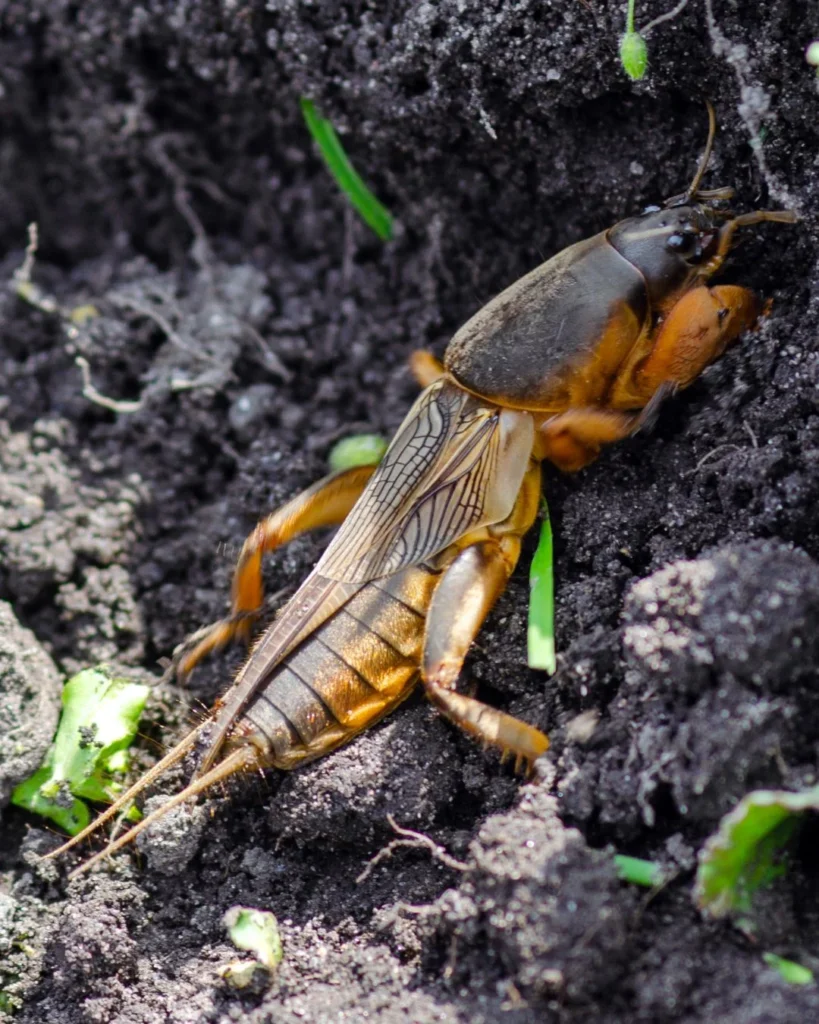Mole crickets, scientifically known as Gryllotalpidae, belong to the same order as crickets and grasshoppers (Orthoptera), a group distinguished by a diversity of morphological and behavioral adaptations. A notable adaptation in mole crickets is the transformation of their forelegs into specialized digging structures, called fossorial legs, resembling shovels. This specialization contrasts with the legs of crickets and grasshoppers, which are developed for jumping.
Mole crickets’ middle legs are adapted for locomotion, and their hind legs, although still capable of jumping, are rarely used for this purpose. Furthermore, mole crickets possess a muscular body highly adapted to subterranean life, measuring between 1.2 to 2 inches (3 to 5 cm) in length, with coloration varying from brown to grayish and covered in brown hairs. Their wings, of the tegmina type, cover half of the abdomen and are accompanied by long antennae.

These insects are ecosystem engineers, creating complex systems of tunnels and underground chambers that can reach up to 8 inches (20 cm) deep. These tunnels are not only shelters but also play a crucial role in soil aeration and nutrient cycling. However, in gardens and lawns, the presence of these tunnels can be detrimental, weakening soil structure and damaging plant roots. Mole cricket females are prolific, capable of laying up to 200 eggs in 3 to 4 chambers, each comparable to the size of a chicken egg. The nymphs emerge approximately 40 days after egg laying and initially feed on organic matter and small roots nearby. By fall, mole cricket nymphs reach adulthood.
Mole crickets are nocturnal, feeding on organic matter, including other insects, roots, and sprouts. The greatest damage to lawns is not from direct feeding but from the tunnels they create, exposing and damaging plant roots. This leads to the emergence of dry, yellowed areas, and death in specific areas. Young plants, with still-developing root systems, are particularly vulnerable.
Contrary to what many may think, mole crickets are harmless and non-venomous. When handling them, do not be alarmed; the small pinches they give on the skin are their attempt to dig to hide.
Preventing mole cricket infestation can be effectively achieved by improving drainage or reducing watering of the garden during the spring. This approach aims to create an environment less favorable for these insects’ reproduction, as females seek moist places to lay eggs. Moreover, maintaining well-drained soil with balanced moisture is beneficial not only for mole cricket control but also for the overall health of plants.
To control mole crickets in residential gardens, a common technique is to saturate the infested ground with a water and detergent or soap solution. For dosage, it is recommended to use about 3.4 ounces (100 ml) of soap (preferably potassium soap) for every 2.6 gallons (10 liters) of water. This solution acts as an irritant to mole crickets, forcing them to leave their shelters. However, it is crucial to perform this application in the late afternoon or evening, as sun exposure can cause plant damage due to the reaction of detergent or soap with sunlight.

If the infestation is very large, with many mole crickets emerging after the solution application, it may be necessary to resort to insecticides. However, it is important to use insecticides as a last resort, due to the potential adverse effects on the environment and other non-target organisms.
In very extensive lawns, like golf courses, biological control with parasitic nematodes, such as Steinernema scapterisci and S. riobravos, can be an effective alternative. These nematodes are natural enemies of mole crickets and can significantly reduce their populations without negatively impacting the environment. However, it is interesting to note that in high-maintenance areas, where lawns are frequently irrigated and well cared for, biological control tends to be less effective and long-lasting than in low-maintenance areas.
This occurs because the favorable conditions maintained in these environments can counterbalance the effect of biological control agents. It is important, therefore, to consider integrating cultural control methods, such as proper irrigation management and soil maintenance, with biological control strategies for effective management of mole crickets in lawns.


